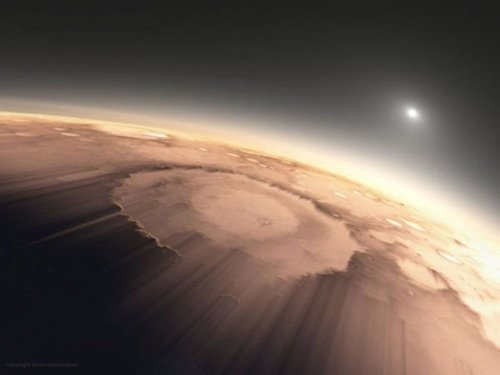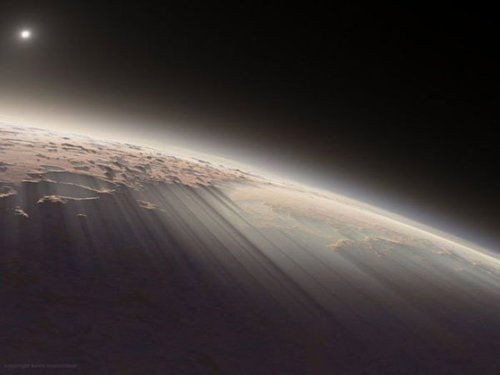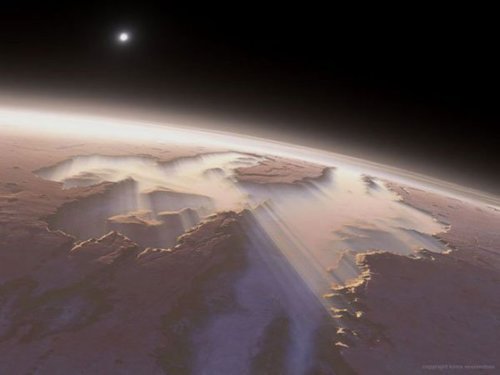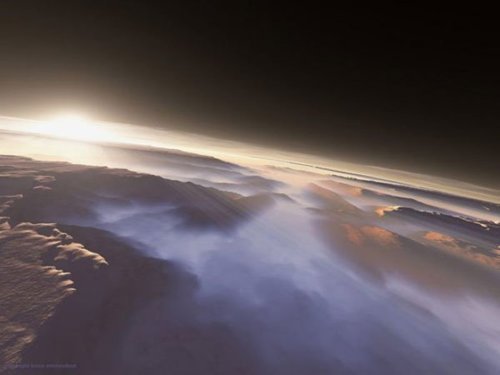Telescope Instruments Part One:

Telescope Instruments Part One:
What they are (humor me)
Astronomy is an old field. For ages astronomers have had to be satisfied looking at the sky and interpreting what they saw as somehow connected to their Earthly lives. Zeus carried Ganymede off into the heavens and similarly the sky was a place of supernatural awe, somewhere that held your fortunes, a place the dead go, somewhere a child could be carried off to by a god.
Remarkable natural events like storms and lightning blistering over our us long seemed to confirm any and all suspicion and belief. For what could be responsible for something like lightning but a god? What else could the Sun be, but some divine light? Though the atoms in our bodies don’t remember where they come from, the answers have always been there, elusive.
When people finally started looking from the Sun to the stars in skeptical comparison, it was symbolically the beginning of a new age for astronomy. The stars weren’t pinholes in the sky, nor were they jewels (well some are “diamonds” but that was just a remarkably good guess!). Stars, people gradually realized, were kin to our own Sun. Could there be other Earths?
This truth is so grand, and it implies a universe so vast that it was more unbelievable to people than to simply go on assuming the lightning came from the likes of a “Zeus”. Human creativity, intellect and curiosity grew, however. We kept exploring and questioning until at last the technology we created harnessed the very electricity we used to fear.
In a sublime twist of irony Polyphemus, fire in hand, took to the heavens.
We have learned, in our exploration of nature, that we are not helpless. The divinity we saw in the heavens is literally same stuff that makes our blood red. We were of the sky all along and all it took was the most human part of us to figure this out: our curiosity.
Embracing our knack for exploration, however wasn’t exactly an easy truth. Our stories of gods in chariots dragging the Sun across the sky weren’t simply backwards: they were entirely simplistic. The universe astounded us for so long because our imaginations failed in grandiosity. The universe was the better magician and we simply didn’t know the tricks.
The technology which has resulted from our scientific exploration has similarly become more sophisticated. Out of necessity, we constantly invent new tools to solve old problems, which traditionally reveal another problem hitherto unknown.
The progression looks like this:
Astronomers stare up and wonder if the bright dot is a god or another planet.
Galileo invents the telescope and realizes that yes, there are other planets, but only a couple of the dots were visible - for most of them distance was too great to discern anything.
As math and science progressed, we became able to calculate the brightness, accounted for distance and it was obvious that all the bright dots unobservable with telescopes were roughly as bright as our Sun. Not all the dots fit this description though as some were very hazy and smoky looking.
Hubble then figures out that some of those hazy things are other galaxies, not just stars, but this extraordinary realization meant the universe was larger than the Milky Way! How could it be that another galaxy was all the way across space like that? Why did they seem to be moving farther from us faster, the farther they were?
I’ll stop there. You get the point. The progression of science has been met a proportional progression of mystery. This is as true today as it’s been since the dawn of science. The question then becomes this:
What is it that allows us to repeatedly push the darkness of ignorance away, to repeatedly domesticate the mysterious and turn the mystical forces of the universe to our personal use?
Our technology. Again, using our creativity and intellect as hammer and anvil, we forge miraculous solutions to unsolvable problems.
In astronomy, our resources are especially limited given the incredible distances that separate us from our targets. How can we possibly know anything about a planet orbiting a star hundreds of light years away?
In a way mother nature almost commit the perfect crime. It left one prolific clue behind though: light. Because of things like light’s dual wave-particle nature, techniques like spectroscopy and our growing ability to respond to and control our optics’ environments, astronomers are hot on multiple trails.
I want to explore and introduce you to some basic principles of the special mechanical eyes astronomers build which turn an otherwise invisible universe, into a bright, transparent scroll to our curiosity.
(Will be continued in part two)
(Image credit: NASA and Chris Gunn)
More Posts from Maevetheeuropan and Others
Largest Batch of Earth-size, Habitable Zone Planets
Our Spitzer Space Telescope has revealed the first known system of seven Earth-size planets around a single star. Three of these planets are firmly located in an area called the habitable zone, where liquid water is most likely to exist on a rocky planet.

This exoplanet system is called TRAPPIST-1, named for The Transiting Planets and Planetesimals Small Telescope (TRAPPIST) in Chile. In May 2016, researchers using TRAPPIST announced they had discovered three planets in the system.

Assisted by several ground-based telescopes, Spitzer confirmed the existence of two of these planets and discovered five additional ones, increasing the number of known planets in the system to seven.

This is the FIRST time three terrestrial planets have been found in the habitable zone of a star, and this is the FIRST time we have been able to measure both the masses and the radius for habitable zone Earth-sized planets.
All of these seven planets could have liquid water, key to life as we know it, under the right atmospheric conditions, but the chances are highest with the three in the habitable zone.

At about 40 light-years (235 trillion miles) from Earth, the system of planets is relatively close to us, in the constellation Aquarius. Because they are located outside of our solar system, these planets are scientifically known as exoplanets. To clarify, exoplanets are planets outside our solar system that orbit a sun-like star.

In this animation, you can see the planets orbiting the star, with the green area representing the famous habitable zone, defined as the range of distance to the star for which an Earth-like planet is the most likely to harbor abundant liquid water on its surface. Planets e, f and g fall in the habitable zone of the star.
Using Spitzer data, the team precisely measured the sizes of the seven planets and developed first estimates of the masses of six of them. The mass of the seventh and farthest exoplanet has not yet been estimated.

For comparison…if our sun was the size of a basketball, the TRAPPIST-1 star would be the size of a golf ball.
Based on their densities, all of the TRAPPIST-1 planets are likely to be rocky. Further observations will not only help determine whether they are rich in water, but also possibly reveal whether any could have liquid water on their surfaces.
The sun at the center of this system is classified as an ultra-cool dwarf and is so cool that liquid water could survive on planets orbiting very close to it, closer than is possible on planets in our solar system. All seven of the TRAPPIST-1 planetary orbits are closer to their host star than Mercury is to our sun.

The planets also are very close to each other. How close? Well, if a person was standing on one of the planet’s surface, they could gaze up and potentially see geological features or clouds of neighboring worlds, which would sometimes appear larger than the moon in Earth’s sky.

The planets may also be tidally-locked to their star, which means the same side of the planet is always facing the star, therefore each side is either perpetual day or night. This could mean they have weather patterns totally unlike those on Earth, such as strong wind blowing from the day side to the night side, and extreme temperature changes.

Because most TRAPPIST-1 planets are likely to be rocky, and they are very close to one another, scientists view the Galilean moons of Jupiter – lo, Europa, Callisto, Ganymede – as good comparisons in our solar system. All of these moons are also tidally locked to Jupiter. The TRAPPIST-1 star is only slightly wider than Jupiter, yet much warmer.
How Did the Spitzer Space Telescope Detect this System?
Spitzer, an infrared telescope that trails Earth as it orbits the sun, was well-suited for studying TRAPPIST-1 because the star glows brightest in infrared light, whose wavelengths are longer than the eye can see. Spitzer is uniquely positioned in its orbit to observe enough crossing (aka transits) of the planets in front of the host star to reveal the complex architecture of the system.

Every time a planet passes by, or transits, a star, it blocks out some light. Spitzer measured the dips in light and based on how big the dip, you can determine the size of the planet. The timing of the transits tells you how long it takes for the planet to orbit the star.

The TRAPPIST-1 system provides one of the best opportunities in the next decade to study the atmospheres around Earth-size planets. Spitzer, Hubble and Kepler will help astronomers plan for follow-up studies using our upcoming James Webb Space Telescope, launching in 2018. With much greater sensitivity, Webb will be able to detect the chemical fingerprints of water, methane, oxygen, ozone and other components of a planet’s atmosphere.
At 40 light-years away, humans won’t be visiting this system in person anytime soon…that said…this poster can help us imagine what it would be like:

Make sure to follow us on Tumblr for your regular dose of space: http://nasa.tumblr.com
Morning on Mars






6 Martian sunrises, as seen by the HiRISE orbiter. Once again, not artist’s renditions.

NASA Wants Deep Space Habitat Ideas
How will humans live on Mars? Well, NASA’s not really sure yet, but if you’ve got any ideas you can submit them now. The agency has just put out a call for proposals for “deep space habitation prototypes.”
from NASA’s press release:
NASA is soliciting proposals for the development of prototypes for deep space habitats that will give astronauts a place to call home during long-duration missions supporting the agency’s Journey to Mars.
OMG congrats! How exciting! I can't wait to see your photos! I've tried with my SLR and uh it has NOT gone well lol.
I did it.
After a year of talking I finally bit the bullet and got a DSLR camera (Nikon D5300) for astrophotography. Will be using it at the observatory (16″ Cassegrain) as well as during hikes for sweeping vistas under the Milky Way. Very excited to explore astrophotography as a hobby and can’t wait to start uploading pictures
Space Station Research: Air and Space Science
Each month, we highlight a different research topic on the International Space Station. In June, our focus is Air and Space Science.

How is the space station being used to study space? Studies in fundamental physics address space, time, energy and the building blocks of matter. Recent astronomical observation and cosmological models strongly suggest that dark matter and dark energy, which are entities not directly observed and completely understood, dominate these interactions at the largest scales.

The space station provides a modern and well-equipped orbiting laboratory for a set of fundamental physics experiments with regimes and precision not achievable on the ground.
For example, the CALorimetric Electron Telescope (CALET) is an astrophysics mission that searches for signatures of dark matter (pictured above). It can observe discrete sources of high energy particle acceleration in our local region of the galaxy.
How is the space station contributing to aeronautics? It provides a long-duration spaceflight environment for conducting microgravity physical science research. This environment greatly reduces buoyancy-driven convection and sedimentation in fluids. By eliminating gravity, space station allows scientists to advance our knowledge in fluid physics and materials science that could lead to better designated air and space engines; stronger, lighter alloys; and combustion processes that can lead to more energy-efficient systems.

How is the space station used to study air? The Cloud-Aerosol Transport System (CATS) is a laster remote-sensing instrument, or lidar, that measures clouds and tiny aerosol particles in the atmosphere such as pollution, mineral dust and smoke. These atmospheric components play a critical part in understanding how human activities such as fossil fuel burning contribute to climate change.

The ISS-RapidScat is an instrument that monitors winds for climate research, weather predictions and hurricane monitoring from the International Space Station.

For more information on space station research, follow @ISS_Research on Twitter!
Make sure to follow us on Tumblr for your regular dose of space: http://nasa.tumblr.com
How Do You Stay Fit on a Mission to Mars?
This mini exercise device could be the key!
Onboard the International Space Station, astronauts need to work out to maintain their bone density and muscle mass, usually exercising 2 hours every single day. Throughout the week, they exercise on three different pieces of equipment–a bike, a treadmill and the Advanced Restive Exercise Device (ARED).

All these devices are needed to keep an astronaut healthy.
However, deep-space vehicles like our Orion Spacecraft aren’t as roomy as station, so everything — including exercise equipment — needs to be downsized. The Miniature Exercise Device (MED-2) is getting us one step closer to being able to keep astronauts’ bodies healthy on long journeys to the moon, Mars and beyond.

MED-2 is a compact, all-in-one exercise device that we developed and will be launching to the space station Tuesday, March 22. Onboard the station, we’ll see how MED-2 will perform in microgravity and how it will need to be further adapted for our Journey to Mars. However, it’s already pretty well equipped for deep space missions.
So what makes MED-2 so great for deep space travel and our Journey to Mars?
1. It is an all-in-one exercise device, meaning it can do both aerobic and resistive workouts. When we go to Mars, the less equipment we need, the better.

2. It’s incredibly light. The MED-2 weighs only 65 pounds, and every pound counts during space missions.

3. It has 5 - 350 pounds of resistance, despite weighing only 65 pounds. Astronauts don’t all lift the same amount, making the flexibility in MED-2’s “weights” essential.

4. It’s tiny. (Hence its name Miniature Exercise Device.) Not only is MED-2 incredibly light, but it also won’t take up a lot of space on any craft.

5. It powers itself. During an aerobic workout, the device charges, and then that power is used to run the resistive exercises. When traveling to space, it’s good when nothing goes to waste, and now astronauts’ workouts will help power the Journey to Mars.

MED-2 is only one of many devices and experiments flying on Orbital ATK’s Cygnus spacecraft. To find out more about the science on the space station, follow @ISS_Research and @Space_Station on Twitter.
Make sure to follow us on Tumblr for your regular dose of space: http://nasa.tumblr.com








Very strange things happen to your body if you spend a year in space
NASA Astronaut Scott Kelly returns to Earth Tuesday night after spending almost a year in space.
But his 340 days aboard the International Space Station (ISS) haven’t been all fun and games.
Our bodies evolved on Earth, so they’re not built for weightlessness — which is exactly why NASA plans to use Kelly to study the long-term effects of spaceflight the human body.




Dynamic projection mapping onto deforming non-rigid surface
Truly impressive technology from Ishikawa Watanabe Laboratory, University of Tokyo, can accurately projection map on moving, loose, dynamic surfaces:
We realize dynamic projection mapping onto deforming non-rigid surface based on two original technologies. The first technology is a high-speed projector “DynaFlash” that can project 8-bit images up to 1,000 fps with 3 ms delay. The second technology is a high-speed non-rigid surface tracking at 1,000 fps. Since the projection and sensing are operated at a speed of 1,000 fps, a human cannot perceive any misalignment between the dynamically-deforming target and the projected images. Especially, focusing on new paradigms in the field of user interface and fashion, we have demonstrated dynamic projection mapping onto a deformed sheet of paper and T-shirt. Also we show that projection to multiple targets can be controlled flexibly by using our recognition technique.
More Here

omfg I wanna buy this as a poster


Do not go gentle into that good night. Rage, rage against the dying of the light.
-
 perro001 liked this · 8 years ago
perro001 liked this · 8 years ago -
 ma-rys-world liked this · 8 years ago
ma-rys-world liked this · 8 years ago -
 zombiewoof liked this · 8 years ago
zombiewoof liked this · 8 years ago -
 youwantthemoon liked this · 8 years ago
youwantthemoon liked this · 8 years ago -
 bittertwee reblogged this · 8 years ago
bittertwee reblogged this · 8 years ago -
 adharacat liked this · 8 years ago
adharacat liked this · 8 years ago -
 nudzi reblogged this · 8 years ago
nudzi reblogged this · 8 years ago -
 nudzi liked this · 8 years ago
nudzi liked this · 8 years ago -
 gojiro reblogged this · 8 years ago
gojiro reblogged this · 8 years ago -
 gojiro liked this · 8 years ago
gojiro liked this · 8 years ago -
 slacka-daisical liked this · 8 years ago
slacka-daisical liked this · 8 years ago -
 jellytoucher liked this · 8 years ago
jellytoucher liked this · 8 years ago -
 frankenstein-girl liked this · 8 years ago
frankenstein-girl liked this · 8 years ago -
 ruidoazul liked this · 8 years ago
ruidoazul liked this · 8 years ago -
 mayorofdinosaurs liked this · 8 years ago
mayorofdinosaurs liked this · 8 years ago -
 zucca101 liked this · 8 years ago
zucca101 liked this · 8 years ago -
 majorcasshole liked this · 8 years ago
majorcasshole liked this · 8 years ago -
 antaresdreams liked this · 8 years ago
antaresdreams liked this · 8 years ago -
 nnovae reblogged this · 8 years ago
nnovae reblogged this · 8 years ago -
 grimnismal liked this · 8 years ago
grimnismal liked this · 8 years ago -
 maevetheeuropan reblogged this · 8 years ago
maevetheeuropan reblogged this · 8 years ago -
 maevemauvaise liked this · 8 years ago
maevemauvaise liked this · 8 years ago -
 drthskyguy reblogged this · 8 years ago
drthskyguy reblogged this · 8 years ago -
 friendlywiz reblogged this · 8 years ago
friendlywiz reblogged this · 8 years ago -
 friendlywiz liked this · 8 years ago
friendlywiz liked this · 8 years ago -
 shorty2431 liked this · 8 years ago
shorty2431 liked this · 8 years ago -
 x-15 reblogged this · 8 years ago
x-15 reblogged this · 8 years ago -
 planned-planethood reblogged this · 8 years ago
planned-planethood reblogged this · 8 years ago